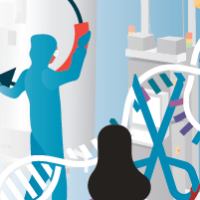Development and validation of quantitative real-time PCR for the detection of residual HEK-293 host cell DNA
Cell & Gene Therapy Insights 2020; 6(3), 439–448
10.18609/cgti.2020.054
The presence of residual DNA in therapy products may lead to an increased risk of oncogenicity, immunogenicity, and other toxicity. Current regulatory authorities (including the US FDA, EMA and WHO) limited the accepted amounts of residual DNA in biological products making it extremely important to have a sensitive method of quantifying residual host cell DNA. Among the methods of detecting residual DNA, quantitative polymerase chain reaction (qPCR) is the most widely used for residual DNA quantitation due to its sensitivity, accuracy, precision, and time-saving capability. This article examines the development and validation of a new, highly sensitive and accurate integrated solution for detection and quantitation of low level HEK-293 DNA to help meet regulatory requirements.
